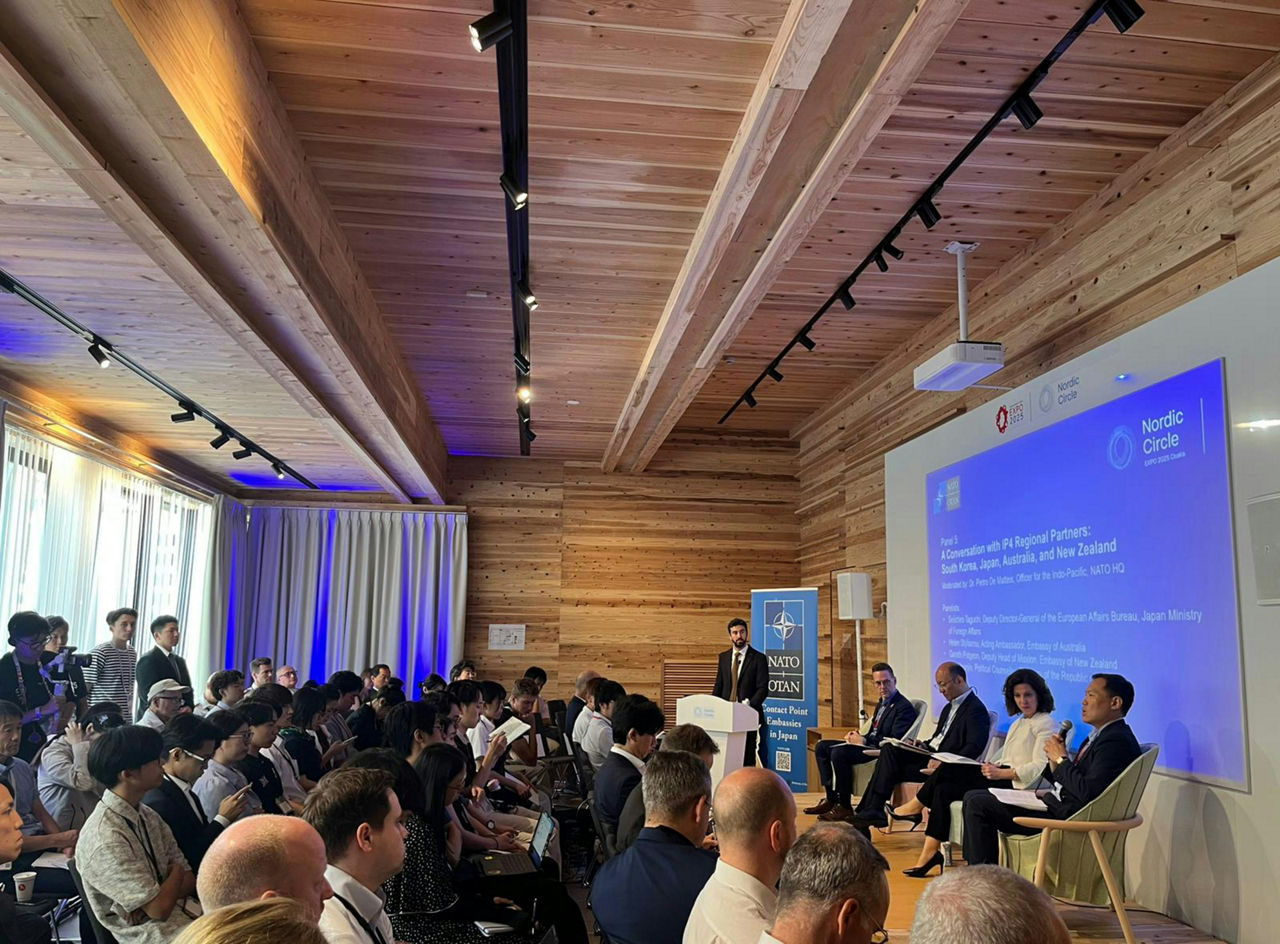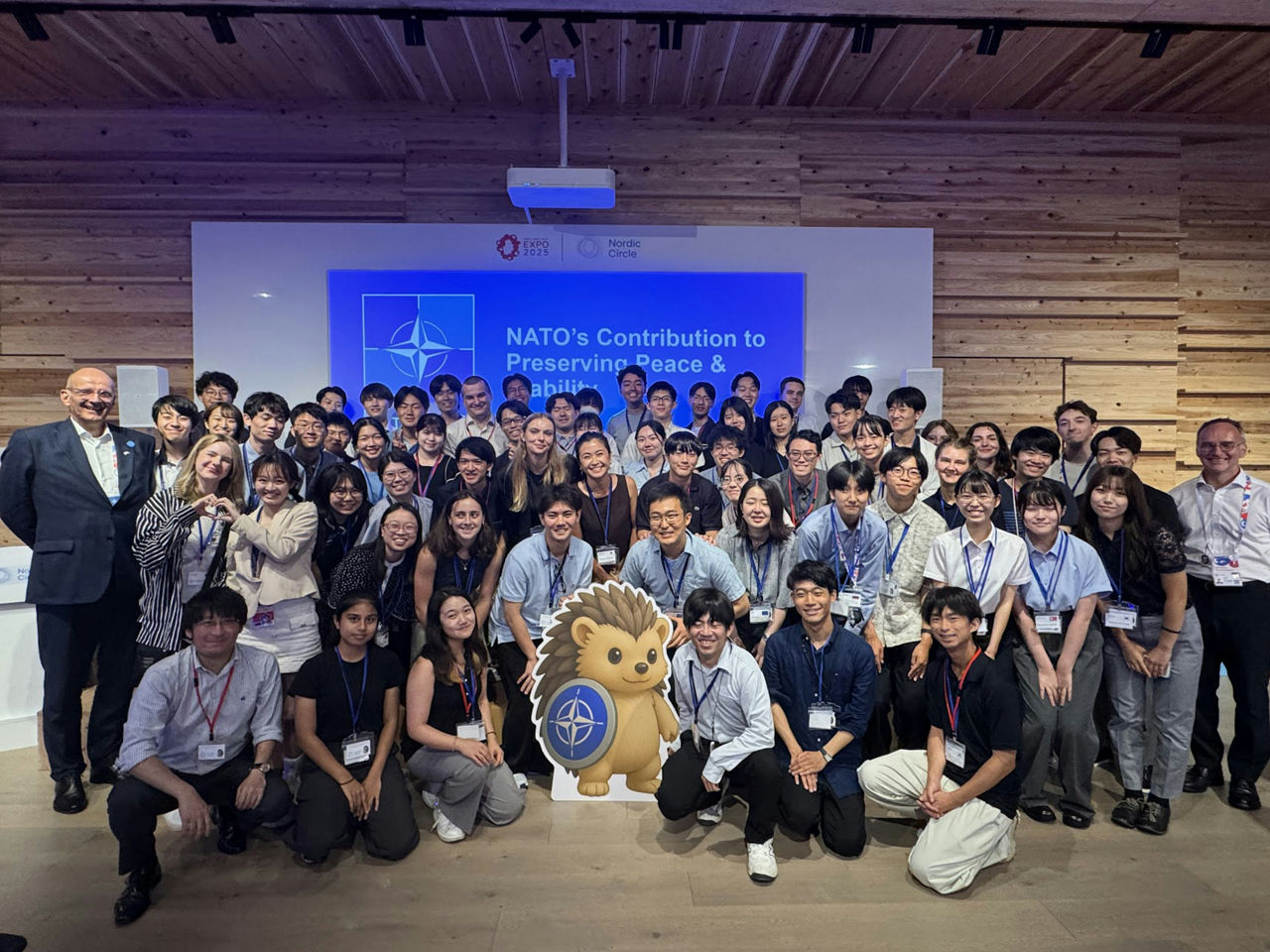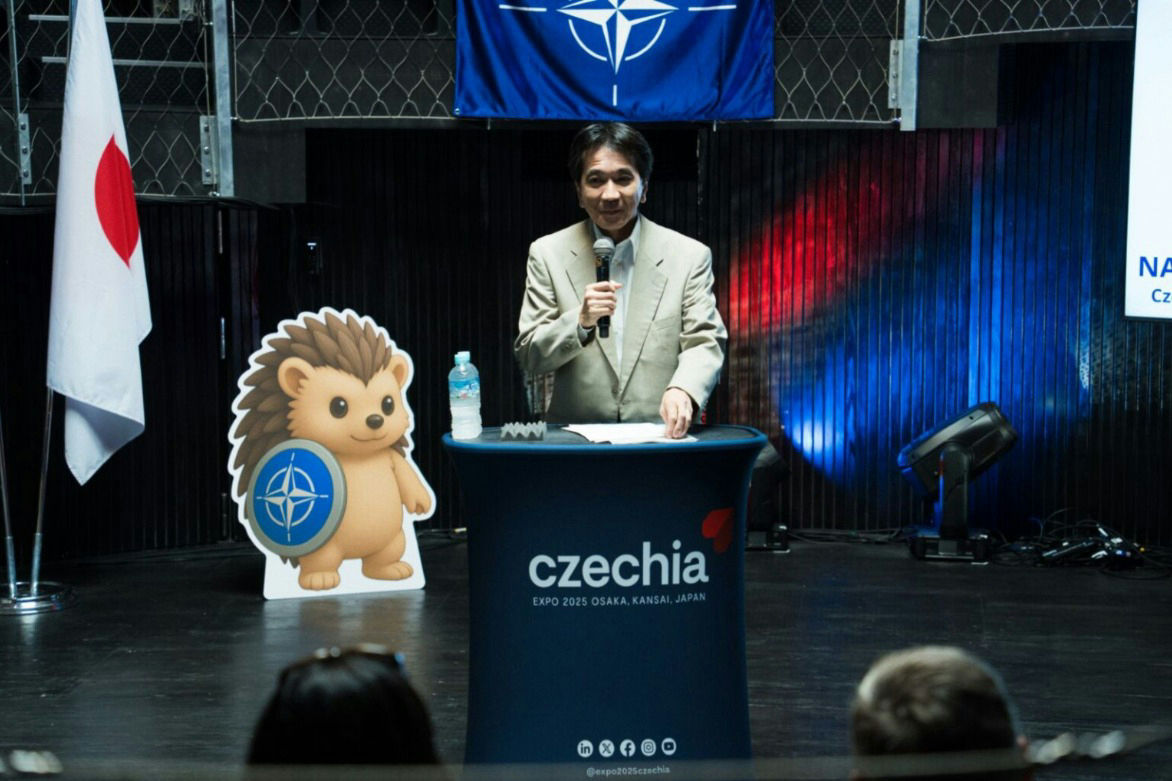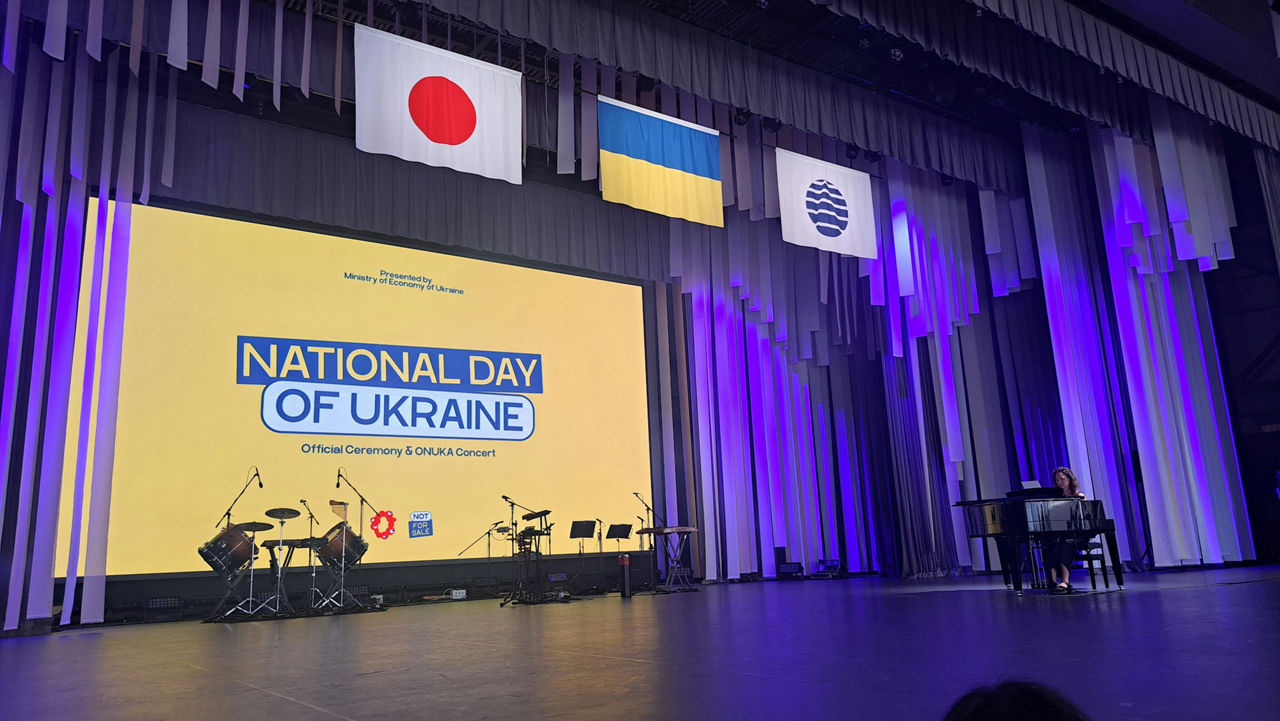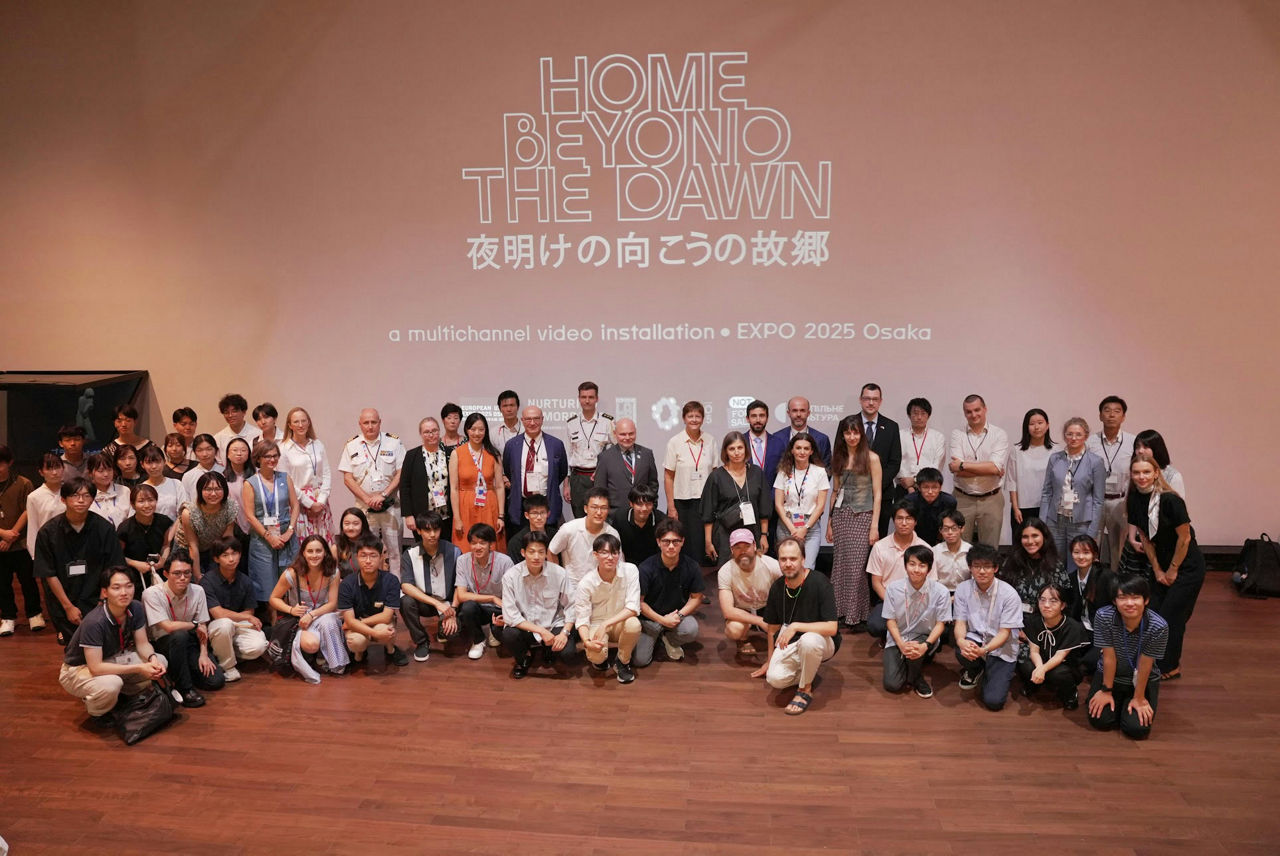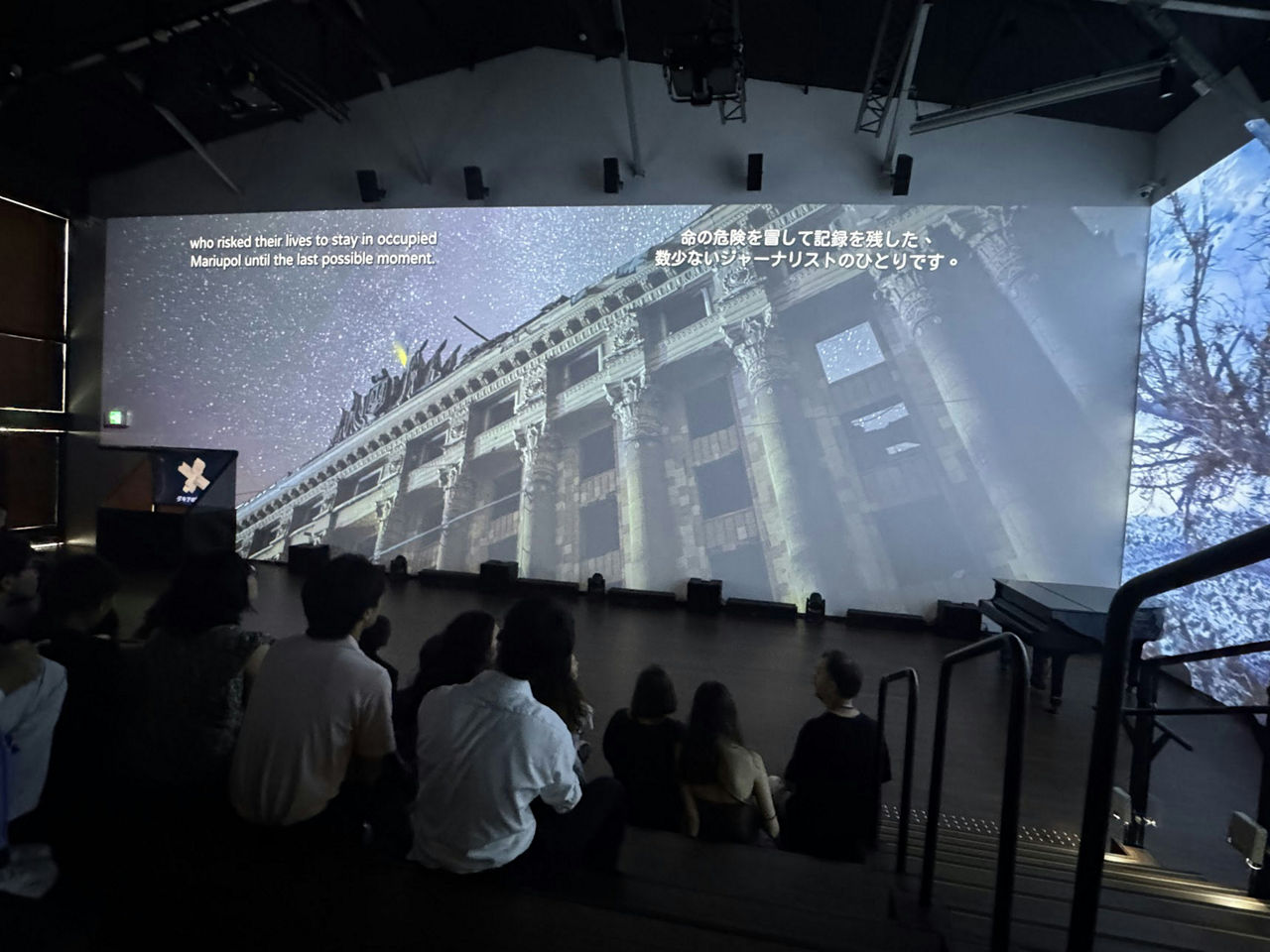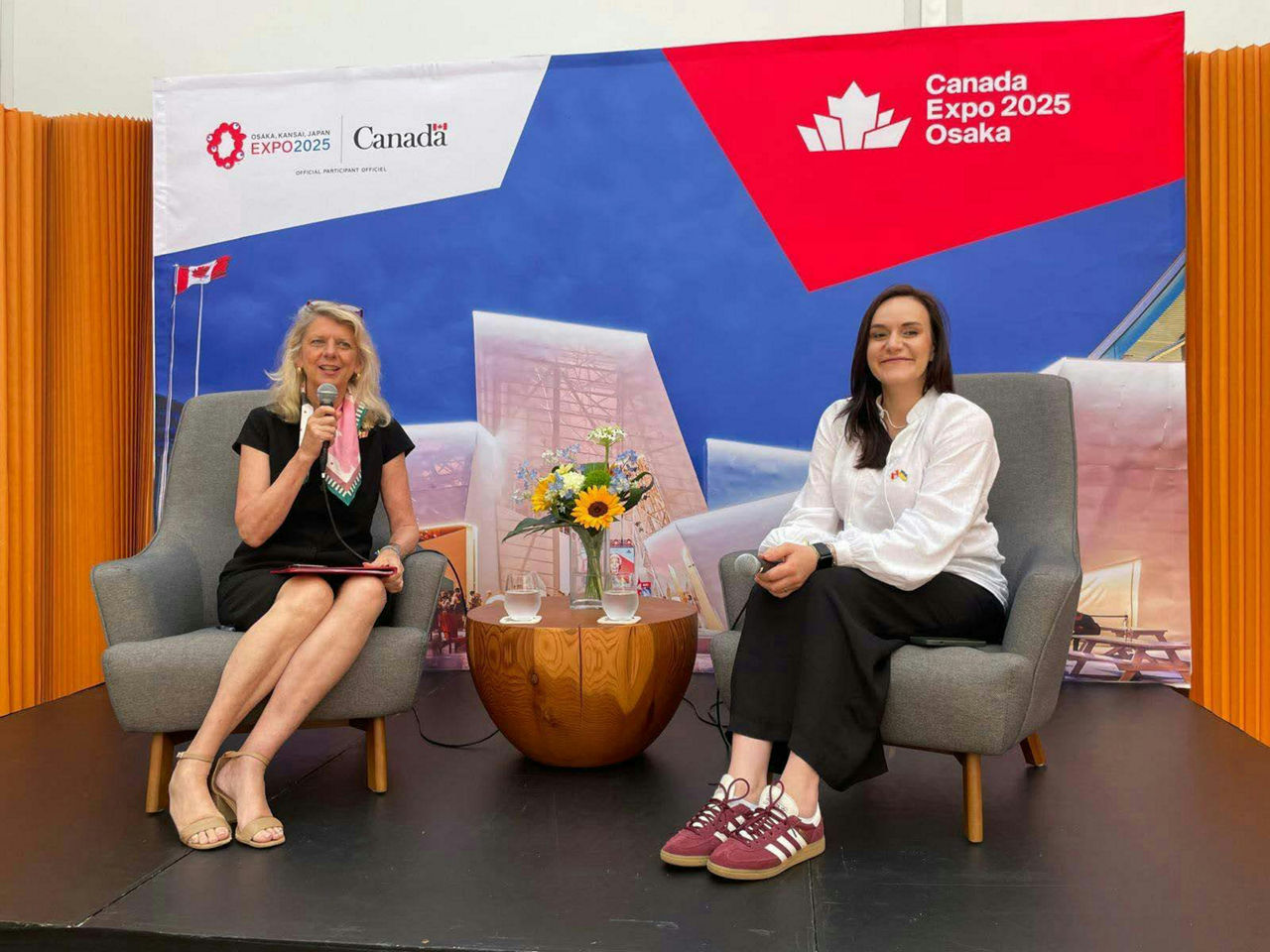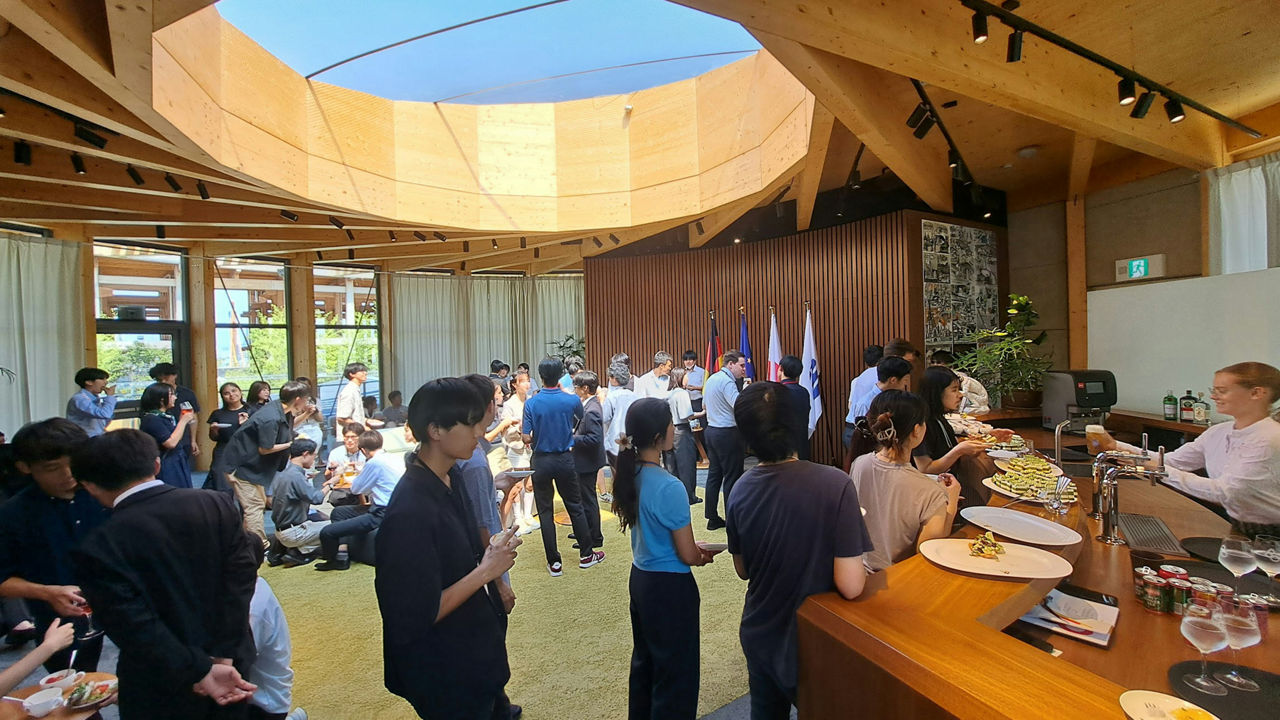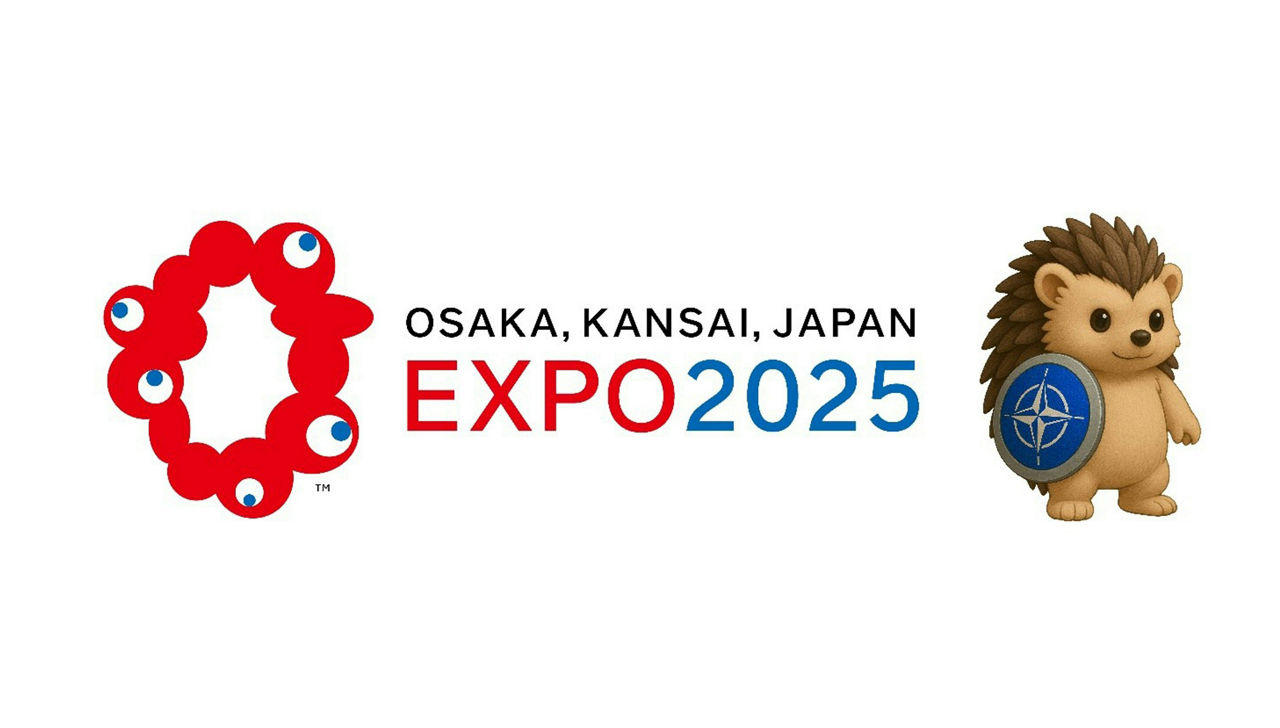Download NATO’s broadcast-quality video content free of charge

NATO MULTIMEDIA ACCOUNT
Access NATO’s broadcast-quality video content free of charge

Check your inbox and enter verification code
You have successfully created your account
From now on you can download videos from our website
Subscribe to our newsletter
If you would also like to subscribe to the newsletter and receive our latest updates, click on the button below.
Enter the email address you registered with and we will send you a code to reset your password.
Didn't receive a code? Send new Code
The password must be at least 12 characters long, no spaces, include upper/lowercase letters, numbers and symbols.
Your password has been updated
Click the button to return to the page you were on and log in with your new password.
NATO participates at World Expo for the first time in Osaka, Japan
Following the official completion of Expo 2025 in Osaka, Japan, NATO reflects on its first-ever participation in one of the world’s largest cultural events. Engaging not just with policymakers and diplomats, but also with students, artists, innovators and everyday visitors from Japan, Asia and across the globe, NATO’s activities during the “Peace, Human Security and Dignity” theme weeks in August at Expo 2025 underscored how the Alliance works to maintain peace through deterrence and defence as well as cooperative security with like-minded partners.
At World Expo Osaka Kansai in Japan, a new version of NATO’s long-standing informal hedgehog mascot made its debut. Symbolising peace, resilience and defensive strength, the mascot quickly became a fan favourite among visitors and a symbol of NATO’s open approach at the Expo.
Assets details
- Location Osaka , Japan
- Themes Square
- Resolution 1244 x 1288 PX
- Aspect ratio 2:3
- File format JPEG
- Usage right: NATO has the sole copyright for these photos and a credit mention is required should images be used.
- Credit: NATO
At the Nordic Pavilion, NATO hosted the conference “NATO’s Contribution to Preserving Peace & Stability”. The event gathered representatives from the diplomatic community, academia, think-tanks, international organisations and youth from Allies, the European Union, NATO’s Indo-Pacific partners and Ukraine.
Assets details
- Location Osaka , Japan
- Themes Landscape
- Resolution 1600 x 1180 PX
- Aspect ratio 16:9
- File format JPEG
- Usage right: NATO has the sole copyright for these photos and a credit mention is required should images be used.
- Credit: NATO
If one group defined NATO’s participation in Osaka, it was the young people of Japan. Thanks to a NATO grant to the University of Tokyo’s Research Center for Advanced Science and Technology (RCAST), over 70 students from 25 of the top universities across Japan (and beyond) joined the programme.
Assets details
- Creation date 08 August 2025
- Location Osaka , Japan
- Themes Landscape
- Resolution 1718 x 1288 PX
- Aspect ratio 16:9
- File format JPEG
- Usage right: NATO has the sole copyright for these photos and a credit mention is required should images be used.
- Credit: NATO
Japanese youth attended lectures and workshops with NATO experts, played a hybrid-threat simulation game and exchanged views on peace and security with peers and practitioners alongside Pietro De Matteis, Officer for the Indo-Pacific at NATO Headquarters. For many, it was a once-in-a-lifetime experience. One student described it as “the moment I understood what NATO stands for — not just defence, but dialogue”.
Assets details
- Creation date 08 August 2025
- Location Osaka , Japan
- Themes Landscape
- Resolution 1718 x 1288 PX
- Aspect ratio 16:9
- File format JPEG
- Usage right: NATO has the sole copyright for these photos and a credit mention is required should images be used.
- Credit: NATO
At the Czech Pavilion, NATO organised an industry event titled “Designing Future Security for Our Lives”, bringing together innovators and startups from Japan and Allied countries to explore how technology, artificial intelligence and resilience can shape a safer world. The opening speech was delivered by Hirohisa Mori from the Japanese Ministry of Defence’s Acquisition, Technology and Logistics Agency (ATLA).
Assets details
- Location Osaka , Japan
- Themes Landscape
- Resolution 1172 x 781 PX
- Aspect ratio 16:9
- File format JPEG
- Usage right: NATO has the sole copyright for these photos and a credit mention is required should images be used.
- Credit: NATO
The industry event at the Czech Pavilion included a panel discussion organised by NATO’s Science for Peace and Security Programme with representatives from industry and NATO’s DIANA (Defence Innovation Accelerator for the North Atlantic).
Assets details
- Creation date 08 August 2025
- Location Osaka , Japan
- Themes Landscape
- Resolution 3080 x 2154 PX
- Aspect ratio 16:9
- File format JPEG
- Usage right: NATO has the sole copyright for these photos and a credit mention is required should images be used.
- Credit: NATO
During the “Peace, Human Security and Dignity Week”, which coincided with the NATO Days at Expo 2025, Ukraine also celebrated its national day. The central theme of Ukraine’s programme was gratitude to its partners, who share the values of freedom, dignity and resilience. The official delegation was led by the Ukrainian Deputy Prime Minister for European and Euro-Atlantic Integration, Taras Kachka, with the First Lady of Ukraine, Olena Zelenska, among the distinguished guests at the event. Several activities were organised by NATO Allies to mark the event, including panel discussions and musical performances at the Belgian, Canadian and Portuguese Pavilions.
Assets details
- Creation date 05 August 2025
- Location Osaka , Japan
- Themes Landscape
- Resolution 2288 x 1288 PX
- Aspect ratio 16:9
- File format JPEG
- Usage right: NATO has the sole copyright for these photos and a credit mention is required should images be used.
- Credit: NATO
The Belgian Pavilion hosted a panel discussion titled “Women Artists at War”. It was the occasion for women involved in the military forces as well as artists to exchange on the impact of war on their daily lives.
Assets details
- Creation date 05 August 2025
- Location Osaka , Japan
- Themes Landscape
- Resolution 2288 x 1288 PX
- Aspect ratio 16:9
- File format JPEG
- Usage right: NATO has the sole copyright for these photos and a credit mention is required should images be used.
- Credit: NATO
Cultural diplomacy was at the heart of NATO’s approach at Expo Osaka. At the Romanian Pavilion, more than 10,000 visitors experienced “Home Beyond the Dawn”, a moving exhibition presented by Ukrainian contemporary artists with the support of the European Union.
Assets details
- Location Osaka , Japan
- Themes Landscape
- Resolution 1928 x 1288 PX
- Aspect ratio 16:9
- File format JPEG
- Usage right: NATO has the sole copyright for these photos and a credit mention is required should images be used.
- Credit: NATO
The exhibit told a story of resilience through images, sound and digital art — from Lviv to Kherson to Luhansk — capturing the human cost of conflict and the strength of communities rebuilding through creativity. This collaboration was a vivid example of how culture can connect with new audiences and spark reflection about peace and solidarity.
Assets details
- Creation date 07 August 2025
- Location Osaka , Japan
- Themes Landscape
- Resolution 1718 x 1288 PX
- Aspect ratio 16:9
- File format JPEG
- Usage right: NATO has the sole copyright for these photos and a credit mention is required should images be used.
- Credit: NATO
As part of the NATO Days, the Canadian Pavilion hosted the “Canada–Ukraine Breakfast”, where Commissioners General Laurie Peters (Canada) and Tetyana Berezhna (Ukraine) hosted a dialogue on “Regeneration through women’s empowerment”. This dialogue highlighted how empowering women serves as a powerful driver of sustainable growth, community revitalisation and inclusive development.
Assets details
- Location Osaka , Japan
- Themes Landscape
- Resolution 1600 x 1200 PX
- Aspect ratio 16:9
- File format JPEG
- Usage right: NATO has the sole copyright for these photos and a credit mention is required should images be used.
- Credit: NATO
The German Pavilion organised a reception for students from across Japanese universities involved in the youth-related activities.
Assets details
- Creation date 08 August 2025
- Location Osaka , Japan
- Themes Landscape
- Resolution 2290 x 1288 PX
- Aspect ratio 16:9
- File format JPEG
- Usage right: NATO has the sole copyright for these photos and a credit mention is required should images be used.
- Credit: NATO
At the Portuguese Pavilion, Ukrainian artist Maryana Klochko gave a live music performance. It was an occasion for the general public visiting the World Expo and the Portuguese Pavilion to engage with Ukrainian culture.
Assets details
- Creation date 04 August 2025
- Location Osaka , Japan
- Themes Portrait
- Resolution 2079 x 2656 PX
- Aspect ratio 2:3
- File format JPEG
- Usage right: NATO has the sole copyright for these photos and a credit mention is required should images be used.
- Credit: NATO
Across 12 days, NATO’s activities drew more than 12,000 in-person participants and engaged more online. Japanese media, including NHK, Kyodo, Asahi and Mainichi, covered the events — a reflection of growing public interest in NATO’s partnerships in the Indo-Pacific. The initiative also inspired coverage such as the Tomorrow’s Affairs article “Why is NATO using the World Expo in Japan as a diplomatic stage?”, which praised the Alliance for deploying “a public language of security that is understood and accepted by non-military actors”.
Assets details
- Creation date 08 August 2025
- Location Osaka , Japan
- Themes Landscape
- Resolution 2266 x 1288 PX
- Aspect ratio 16:9
- File format JPEG
- Usage right: NATO has the sole copyright for these photos and a credit mention is required should images be used.
- Credit: NATO
NATO’s first appearance at a World Expo could be seen as a blueprint for communicating to the general public and building people-to-people connections.
Assets details
- Creation date 08 August 2025
- Location Osaka , Japan
- Themes Square
- Resolution 1154 x 1288 PX
- Aspect ratio 2:3
- File format JPEG
- Usage right: NATO has the sole copyright for these photos and a credit mention is required should images be used.
- Credit: NATO
NATO’s participation at Expo 2025 – without a pavilion of its own – depended on collaboration with the Mission of Japan to NATO, Japanese universities and professors across the country, local authorities, as well as Allies and partners in Belgium and Japan with the support of the NATO Contact Point Embassies (Norway and Romania). “The spirit of partnership was what made NATO’s participation a success,” said Dr Pietro De Matteis, NATO’s Engagement Officer responsible for the Alliance’s presence at Expo Osaka. “We worked with Allies, Japanese institutions and local stakeholders to make security tangible, relatable, and even inspiring.”
Assets details
- Location Osaka , Japan
- Themes Landscape
- Resolution 1536 x 1053 PX
- Aspect ratio 16:9
- File format JPEG
- Usage right: NATO has the sole copyright for these photos and a credit mention is required should images be used.
- Credit: NATO
Related content
/


